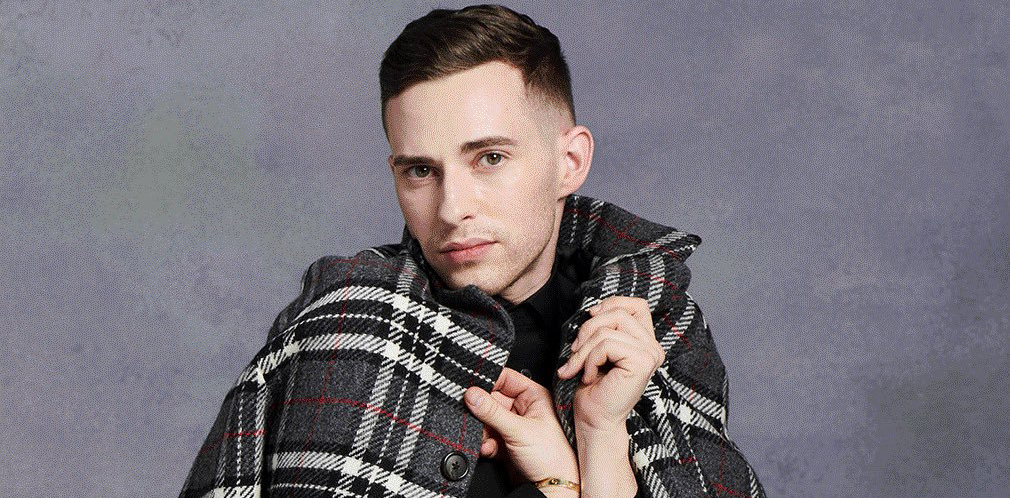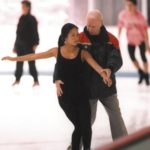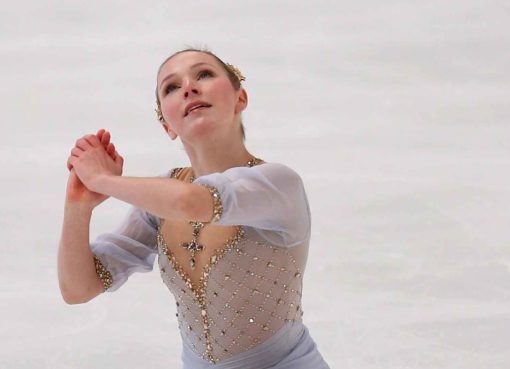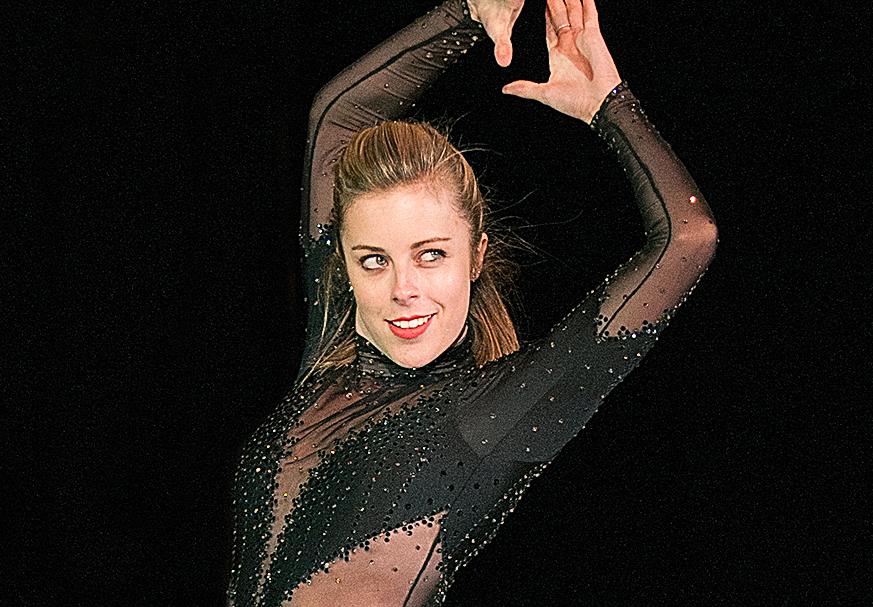Header photo copyright: Grand Central Publishing
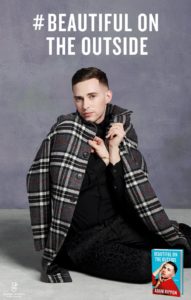
Yes, you will probably laugh out loud reading Adam Rippon’s Beautiful on the Outside. (That happened to me five times, twice in public.)
If you’re hoping for a sassy gay voice with this book, you’re in luck. Double luck if you were also hoping for gems of skate-mom wisdom from Kelly Rippon.
There is a smattering of inside dirt, all the more delightful because it is meticulously worded and beyond reproach.
I don’t know if you’ll cry, but I did. Once when Rippon paid tribute to Johnny Weir and Rudy Galindo for how they contributed to the sport before him as out gay men, and once when a story about Rafael Arutyunyan showed that Rippon had earned this coach’s respect and affection.
Most of all, this book gives you a close-up view of how this Olympic medalist’s mind works. He acknowledges that he’s not “a normal human, but then going to the Olympics is not something normal humans do.” More than any other skating memoir I’ve read, this one demonstrates that championship skating requires just as much mental strength as physical training. Rippon’s mental discipline is phenomenal, as is his ability to reframe setbacks and learn from them.
The structure of the book is beautiful, like Rippon’s cheekbones. It starts off with a profanity in the first sentence, to keep things humble. His painful 2014 U.S. Nationals, when he didn’t qualify for the Olympic team, comes at the exact midpoint of the book. From that point, the humor revs up until, by the end, I guarantee that you will laugh.
It all started in childhood, of course, when tiny Adam dreamed of being like a woman he saw pictured on a popcorn tin, skating outdoors in a long black coat, a bonnet, and a white muff: “The muff would obviously be the key to my success.”
Enter Kelly Rippon, mother of six: “’We’re not going to get a muff,’ my mom said. ‘You don’t need a muff. Where do you even buy a muff?’”
Even as a small child, Rippon had elaborate plans for family talent shows, but they were often foiled because “there was always at least one Rippon child having some sort of meltdown—maybe my brother was crying or my sister shit her pants.” I raised my eyebrows at that. Wouldn’t his sister feel singled out, with a sentence like that? I needn’t have worried; I soon encountered a major recurring theme of this book. Suffice to say that nobody need feel singled out.
Everything you suspected about Kelly Rippon’s Olympic-level parenting is true. With six kids, she made it to every child’s school play or recital. I can’t even do that with two kids. She once caught Adam engaging in rink gossip and cured him by making him watch a four-hour documentary on the Salem witch trials. She insisted on dinner as a family every night.

Then I read about how she reduced her son’s commute as a young teen and saved money: using connections she’d developed on her own, Kelly Rippon found more paying students for Rippon’s coach at their local rink, then started a hockey program at that rink, booked “a ton of rooms at a local hotel” for that program, and got that hotel to reward her with a free room once a week. Then she was able to get Rippon’s coach to travel to them and stay there, at times, instead of him always taking the bus to train with her.
Give that woman a medal.
Adam was her equal, though. He was in sixth grade when she told him she couldn’t drive him to the rink in the mornings because she had to feed and clothe his five siblings and send them to school with their lunches. He got them up early, fed and clothed them himself, packed their lunches, dressed his preschool sister’s hair in “a crown of braids,” then woke his mother and informed her she could drive him to the rink. He did this every morning until he moved out.
This prepared him well for a boss move in his final training year: he singlehandedly changed coach Rafael Arutyunyan’s haphazard scheduling structure. He coordinated schedule information from every other student, made a master plan for the season, presented it to this formidable coach, then held his breath. Arutyunyan adopted it whole. This seems, to me, as grand an achievement as a quad lutz.
This kind of story gives insight into the degree of organization it takes to be an Olympic-level athlete. No wonder Rippon was able to sustain a near-superhuman public appearance schedule during his first professional year.
“I would watch old interviews the hosts had done, and I would see who their favorite guests were. I would write four or five jokes for each appearance and try to get at least two of them into the conversation. I didn’t want it to look too obvious, like I was straining to get to the punch line, but I wanted to have material prepared. See? That was another thing I learned from competing—to do the hard work in the dark so I could shine in the light.”
Figure skating’s emphasis on technical elements, transitions, flow and glide translated well to his post-skating career, as it often does.
One striking passage involves a life lesson from legendary choreographer David Wilson. Rippon demonstrated Wilson’s choreography with a flawless skate that had a single stepout, and this tiny mistake bothered him so much that he broke character in frustration. This brought on a rant from Wilson, who was furious about the disrespect it showed to the work and the audience. It was painful, but it helped Rippon mature past the trap of perfectionism, an enormously empowering move.
But enough about hard work. Don’t worry, there’s drama, too.
If you’re wondering if former coach Nikolai Morozov appears in this book, the answer is yes. From alcohol overuse, to dating of students, to evidence that Morozov was often behind on his rent, the mentions are restrained, but choice.
Yes, Rippon was desperately broke and hungry. Interviews have mentioned that he used to live on free apples from his gym, but I didn’t know until now that he’s actually allergic to apples.
Yes, Rippon did have a chaste romance with Yuna Kim for a while; they were compatible in many ways. Normally, as an Asian woman, I wouldn’t appreciate a white man claiming, “I, too, am a shy, beautiful, timid Asian girl,” but in Rippon’s case…well, fair enough.
Yes, Rippon discusses his coming out process. He mentions an entire network of support behind him, including officials and staff from U.S. Figure Skating, such as the fiercely supportive Barb Reichert, director of external relations. He thanks choreographer Cindy Stuart, friend and fellow world junior champion Derrick Delmore, and Randy Gardner’s husband Jay Gendron, as well. This kind of network is not new, but the support from USFS is a more recent phenomenon. Rippon’s memoir, in conjunction with earlier memoirs from Johnny Weir and Rudy Galindo, chronicle this development in the sport’s U.S. history.
He also discusses a few relationships with men, with a generosity toward his younger self that is absolutely beautiful. If there is anything that young LGBTQ+ folks take from Rippon as a role model, let that gentleness be part of it.
On the other hand, Rippon can be wickedly funny, as well. Kudos to him for writing about an unpleasant ex in a way that is thoroughly satisfying (he deserved it!) without being actually vengeful at all.
Yes, there’s diva humor. He recounts being pleased that when he broke his ankle, at least he had had a pedicure the day before, so he looked good for the X-rays. And then when he left the rink to heal the injury, he cleaned out his locker and left conspicuous vacuum tracings around it because “I wanted it to look like someone had died.”
Rippon doesn’t focus so much on medals. He barely mentions winning Nationals; it’s not about winning. He discusses the process, instead, especially the mental aspect. He recovered from his injury at the Olympic Training Center, where there are countdown clocks to the Olympics everywhere, but he took their ubiquity as incentive to time his recovery, not as a source of stress.
The entire book conveys a tone of authenticity, but it’s not artless. Nor is it performative, although it is conscious of performance. Rippon’s authenticity, instead, comes across as an intentional strategy: hard-won, mindful. After so long in the sport, he has learned that being inauthentic—skating to please others rather than the self, skating to convey a false image, skating while hiding secrets—can only hold the skater back. You can see the proof of this strategy when you watch his rock-solid Olympic programs. He stays mentally present for every moment. He paces himself; he does not rush; he breathes. This is phenomenal.
Rippon mentions saucily, several times, that his birthday is coming up: November 11, to be exact. What would make a good gift for someone who’s made so many of his skating dreams come true? Can somebody get Adam Rippon a really nice muff? Girlfriend deserves one.
Lorrie Kim ran Rainbow Ice, the first website devoted to LGBTQ issues in figure skating, from 1998 to 2006. She has written about figure skating for the Advocate, Outsports, and Icebreaker: The Autobiography of Rudy Galindo with Eric Marcus.


